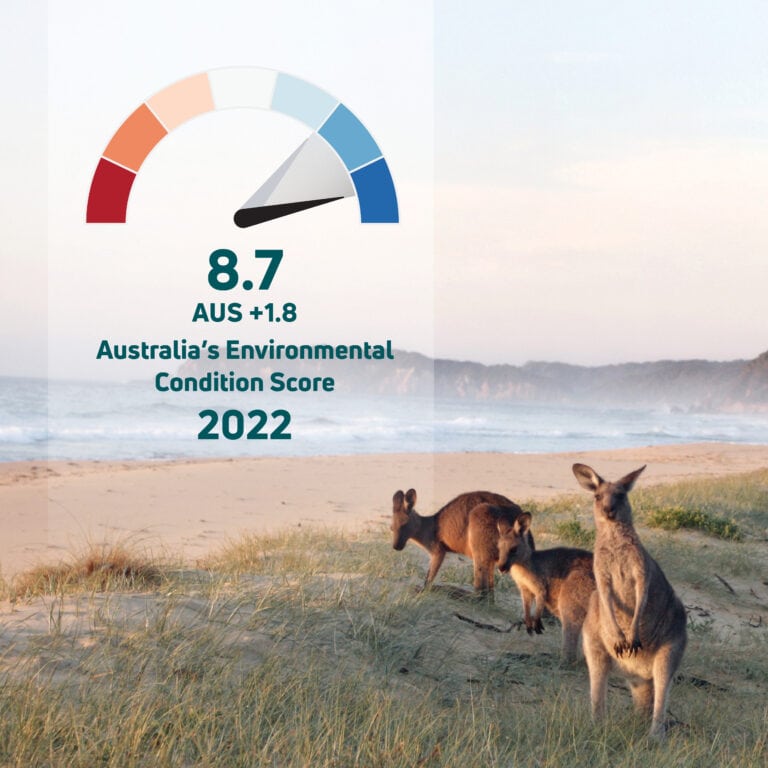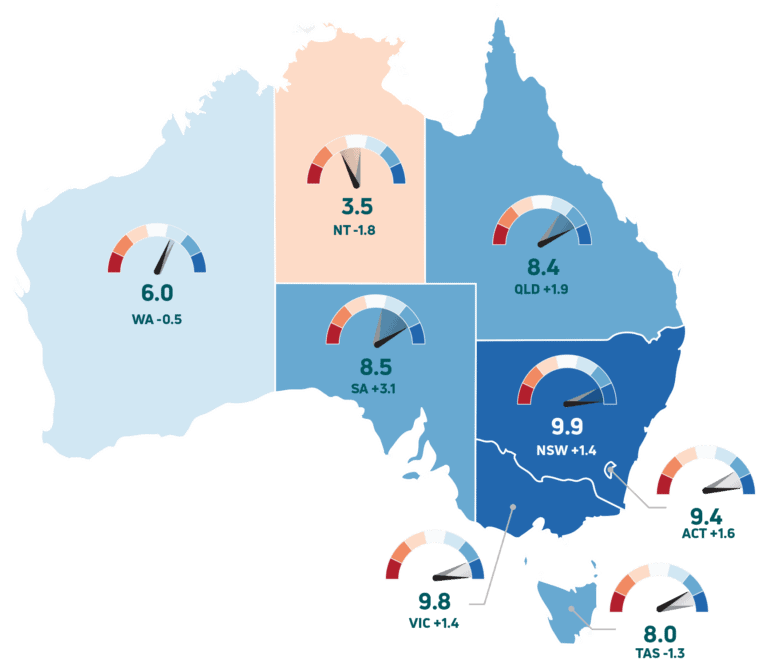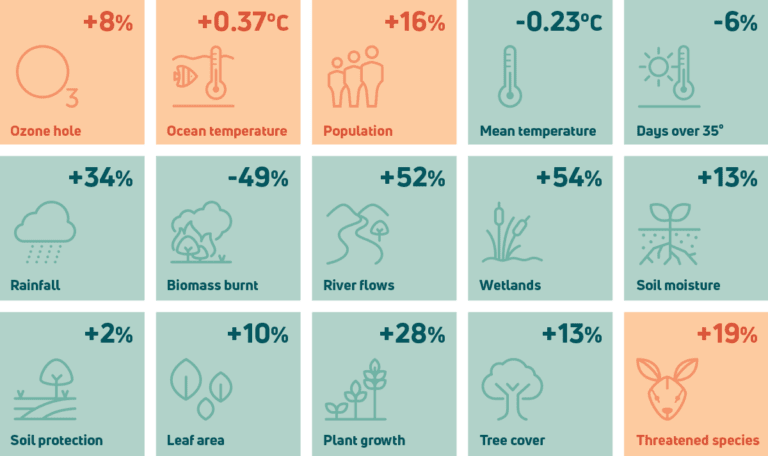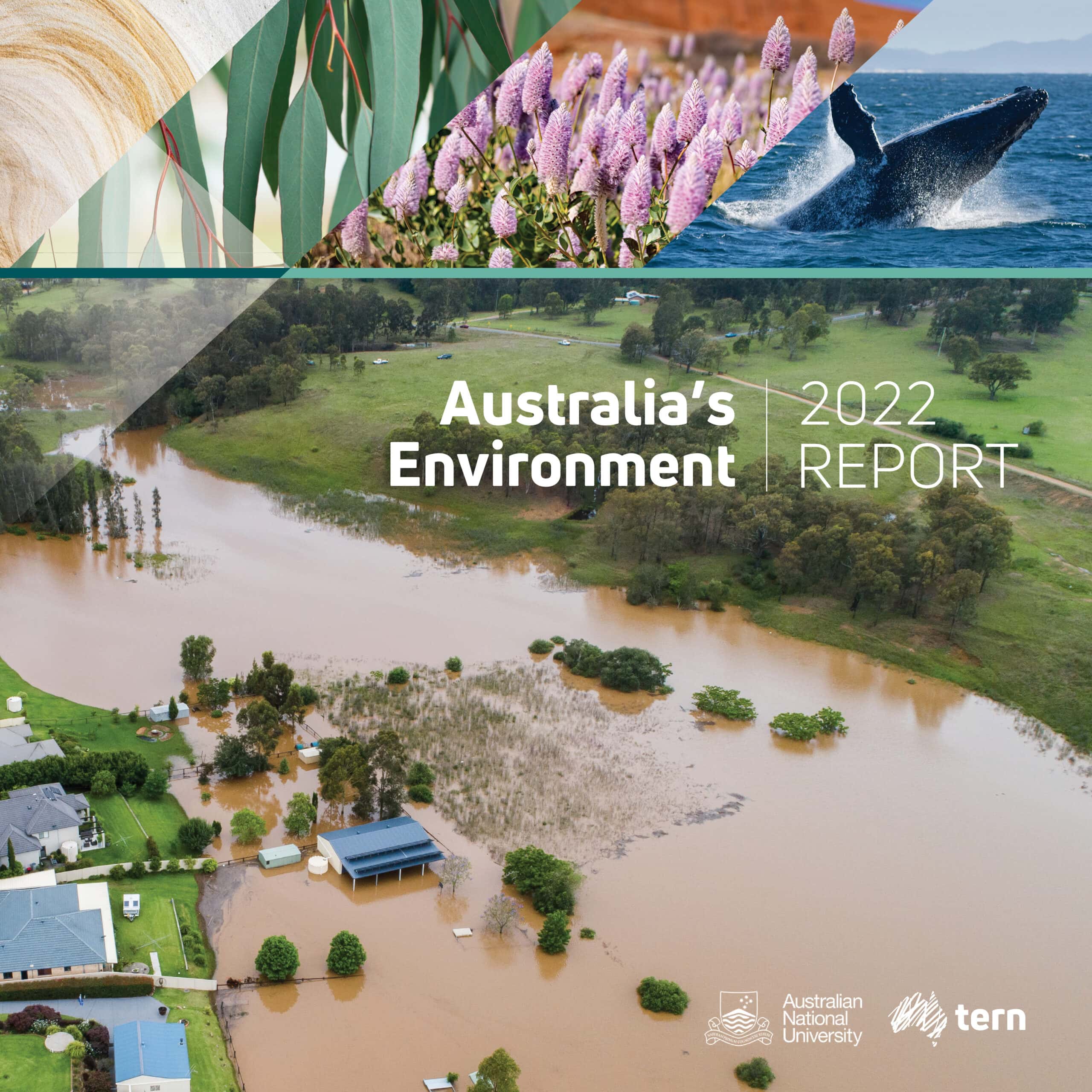Australia experienced a momentous year for water availability and plant growth in 2022, but climate change, habitat destruction, and invasive species remain major threats to biodiversity.
Produced each year since 2015 through a collaboration between TERN and the Australian National University (ANU), the annual scorecard on Australia’s environment provides summaries of key events, environmental conditions and change during 2022. This latest report also sees the inclusion of new data from Australia’s Threatened Species Index (TSX).
The results of the latest report on Australia’s environment are out, and it appears the nation’s environmental conditions made a comeback overall. Australia’s national score reached 8.7 out of 10, the best score since 2011.

Australia saw improvement in water availability and plant growth in 2022, continuing a trend from 2021. Rainfall, river flows, wetland flooding, vegetation growth and tree cover in many parts of eastern Australia reached their highest levels since before 2000 when national-scale measurement became possible thanks to satellites.
With most reservoirs full or filling, there were also good prospects for irrigation farmers, domestic water use and river ecosystems.
ANU’s Professor Albert Van Dijk led the report and said:
“It was a great year for our wetlands, the best in decades. It was also a bumper year for farmers, with growth in dryland cropping a whopping 49% better than the twenty-year average.”
– Professor Albert Van Dijk, Australian National University
But not all of Australia shared in the bonanza: overall environmental conditions declined in parts of the Northern Territory, WA and Tasmania.

Three major environmental challenges remain
Despite many positive developments, three major environmental challenges remain. The most pervasive of these is climate change, impacting our safety, health, the availability of food and water, and our natural ecosystems and biodiversity.
“La Niña normally brings cool conditions, but while the average temperature was the coolest since 2012, it was still relatively warm, at 0.5°C above the long-term average (1961-1990). The ocean around Australia was warmer than ever.”
– Professor Albert Van Dijk, Australian National University
Globally, the last nine years were the warmest ever observed, with record heat waves in Europe and China, and the least Antarctic sea ice ever recorded.
Two more challenges that also heavily impact our natural ecosystems are habitat destruction and invasive species.
The combination of these three challenges has already impacted many native species. Another 30 species were added to the official List of Threatened Species in 2022, bringing the total number to 1,973 — a 43% increase since 2000. Most of the new species on the list were heavily impacted by the 2019/20 Black Summer fires.
Land clearing for housing, mining, and agriculture continues to be widespread. While there was not much fire in 2022, the threat of destructive bushfires looms large in a future with hotter and drier heatwaves.
TERN’s TSX Project Manager, Dr Geoff Heard, said:
“There has been a steady decline of about 6% in the abundance of threatened species each year, an overall decline of 62% since 2000.”
– Dr Geoff Heard, Australia’s Threatened Species Index (TSX)

Tackling these three challenges will be key to addressing the extinction crisis and supporting the future sustainability of a biodiverse environment.
There are some positive signs about the environment in the 2022 Report. Large national park areas have been added to Australia’s protected area network, and Humpback Whales and Southern Right Whales have made an astonishing population recovery since commercial whaling was banned. Global greenhouse gases emissions are being addressed by many countries, although progress is slow and global warming is set to continue for several decades.
Through good management, progress is being made on protecting biodiversity from invasive species.
“We have evidence that conservation activities can work. The abundance of threatened mammals has stabilised where they are protected by control of predators and invasive species, whereas unmanaged populations continued to decline.”
– Dr Geoff Heard, Australia’s Threatened Species Index (TSX)
Long-term data monitoring the status of our environment
To produce the Australia’s Environment report and data explorer, ANU analyses vast amounts of long-term measurements from satellites and on-ground stations using algorithms and prediction models on a supercomputer, including many delivered by NCRIS-enabled projects, including TERN. The results allow patterns of change in Australia’s ecosystems to be assessed, which is critical to understanding and managing our environment.
Without the thousands of data sets gathered by citizen scientists, government, conservation and research groups and made available by TERN and its Threatened Species Index (TSX), Australia would be in the dark and unable to track the changes in abundance of its threatened and near-threatened species.
Produced annually, the joint TERN-ANU environmental condition reporting complements Australian Government State of the Environment reporting. It allows researchers and managers to monitor and analyse trends in the years between government State of the Environment report releases.







